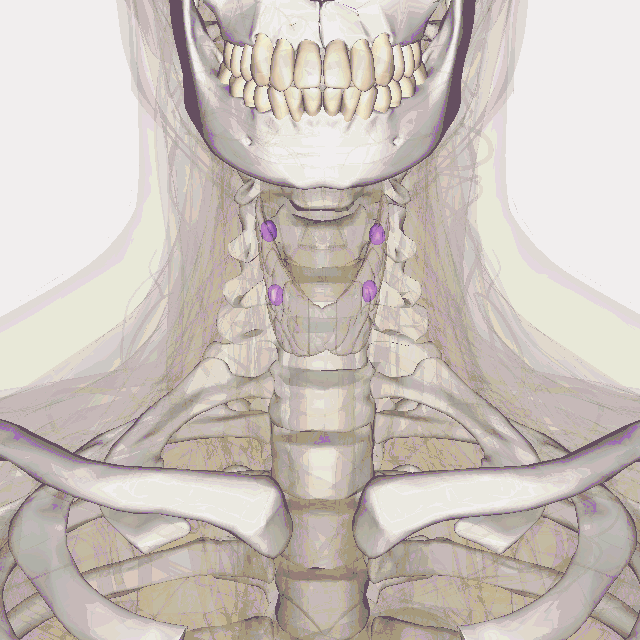Hyperthyroidism Symptoms
Hyperthyroidism is a metabolic disorder characterized by the excess production of thyroid hormone in the body more than it needs. It is also referred to as “overactive thyroid” as the thyroid gland produces high levels of thyroid hormone. The condition belongs to a form of hyper-metabolic syndrome called as thyrotoxicosis as it is associated with high triiodothyronine (T3) or thyroxine (T4) levels in serum. The most common type of hyperthyroidism is Graves’ disease. The terms thyrotoxicosis and hyperthyroidism are used interchangeably by many endocrinologists and clinicians. The most common types of hyperthyroidism include Graves disease ( or diffuse toxic goiter), Plummer disease ( or toxic multinodular goiter ), and toxic adenoma as these disorders constitute around 85-90% of all cases of thyrotoxicosis. Read on to learn about the signs and symptoms of hyperthyroidism.
Signs and Symptoms of Hyperthyroidism
Thyroid hormones normally regulate various systems in the body. They play a key role in various body systems like modulating metabolism, breathing, promoting brain development, regulating body temperature, normalizing the function of cardiovascular and nervous systems, improving muscle strength, weight, preventing skin dryness, stabilizing menstrual cycles, and in regulating the cholesterol levels. Hence, impaired production of thyroid hormone has a negative effect on the following above mentioned body systems.
Major clinical signs associated with hyperthyroidism include anxiety, irritability,weight loss despite an increased appetite, hair loss, heat intolerance, weakness, muscle aches, hyperactivity, hypoglycemia, visual disturbances, increase in blood sugar levels, fatigue, apathy, polydipsia, polyuria, palmar erythema, tremor, moist skin, non pitting edema, thickening of the skin, delirium, profuse sweating, and pretibial myxedema.
In some cases, hyperthyroidism can be asymptomatic; however if symptoms exist, then it can be probably due to increased secretion of thyroid hormone.
Some of the common symptoms include irritability, nervousness, increased perspiration, hand tremors, thinning of the skin, sleeping disorder, fine brittle hair, rapid heart beating, anxiety, and muscular weakness confined to thighs and upper arms.
Hyperthyroidism is initially associated with an increased rate of metabolism, thus raises energy levels. However, the body easily develops tiredness and tends to easily breakdown as the condition progresses.
Although, bowel movements can occur frequently; however, diarrhea can rarely develop.
One of the significant feature of hyperthyroidism is that a patient with good appetite tends to develop profound weight loss which may or may not be accompanied with vomiting. In contrary, some patients can rarely present with weight gain.
Affected women develop amenorrhea (cessation of menstrual cycle), dysmenorrhea (irregular menstrual periods), oligomenorrhea, or thin menstrual flow and infertility problems. Feminization and gynaecomastia can occur. Prolonged hyperthyroidism can result in osteoporosis.
Significant neurological symptoms include anxiety, tremors, hyperkinesis, frequent mood swings, restlessness, concentration difficulty, hyperactive reflexes, irritability, increased motility of digestive system, chorea, large muscle weakness, dizziness, psychiatric disturbances, hyperactivity, loss of libido, periodic or sudden paralysis, nausea, insomnia, myopathy, fatigue and unintended weight loss. A clinical interlink between myasthenia gravis and hyperthyroidism has been determined.
Cardiovascular symptoms include increased heart rate, high systolic blood pressure, arrhythmia (atrial fibrillation), palpitations, dyspnea (or shortness of breath), pounding pulse, sinus tachycardia and abnormally reduced levels of serum cholesterol.
Patients with Graves disease, a prime causative factor of hyperthyroidism, present with an eye condition called as “Exophthalmos”(protrusion of the eyeball). The condition generally occurs in graves disease associated hyperthyroidism and it is considered as a major diagnostic criteria of graves disease. One or both the eyes can be affected and may present with a characteristic bulge. Inflammation of the retro-orbital fat in eye socket results in forward protrusion of the eyeball thus resulting in characteristic stare and hyperthyroid lid-lag.
Minor ocular signs associated with hyperthyroidism include lid-lag (von Graefe’s sign), chemosis (or conjunctival edema), retracted upper eyelid, periorbital edema, and weakness of the extra-ocular muscle. Eyes present with significant enlargement as they are pushed forward by the swollen eye muscles. Dalrymple sign, referred as hyperthyroid stare occurs due to the retraction of eyelids. Diplopia (double vision) can occur due to the weakness of Extra-ocular muscles.
Some patients tend to develop visibly larger swelling in front of the neck due to the typical enlargement of thyroid gland (goiter).
Thyrotoxic crisis, also referred to as Thyroid storm is a severe health complication of hyperthyroidism. It is a rare condition that is experienced by a physically stressed or seriously sick, thyrotoxic patient. The symptoms of thyroid storm include vomiting, dehydration, arrhythmia, diarrhea, tachycardia, abnormally increased body temperature (over 104 degrees F), coma, and death.
Hypothyroidism: Severe hyperthyroidism and specific types of thyroiditis can ultimately damage the thyroid gland, thus leading to hypothyroidism (reduced production of thyroid hormone).
Other symptoms associated with hyperthyroidism include clammy skin, hair loss, weakness, breast development in men, high blood pressure, complete itching, irregular pulse, pounding heart rate, skin flushing, and forceful heart beat.

